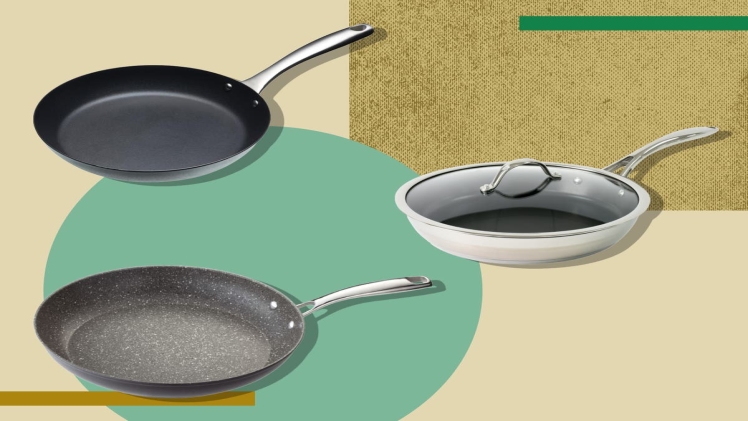The frying pan is an inexpensive, multipurpose kitchen tool that can be used to cook a wide variety of dishes. It has been found in kitchens for centuries and is the most commonly used cooking utensil.
Frying pans are typically made out of metal with handles on either side designed to allow you to carry them around your kitchen easily. They also come in various sizes ranging anywhere from 1 quart up to 18 quarts. These types of pots are oven safe and dishwasher safe, making them very versatile and easy to clean.
When shopping for frying pans, there are several factors to take into consideration. What size do you want? Do you want one with a lid? What material should it be made of? These are all questions you need to ask yourself before buying the first frying pan that catches your eye. Today’s post will focus on choosing the right frying pan based on their materials. Listed below are some of the best frying pan materials to look out for in the market today.
1. Copper
Some of the most expensive frying pans available on the market today are made out of copper. Copper is a great conductor of heat and allows for even cooking throughout the pan. They also heat up very rapidly, making them perfect for those who like to cook meals quickly and efficiently. The only downside to using these types of pans is that they are challenging to clean due to their non-stick coating and the fact that they rust easily.
2. Cast Iron
Cast iron frying pans are another excellent choice for your kitchen arsenal. They are very durable and sturdy, even when exposed to high temperatures in the oven or on top of a grill. These pans lack the non-stick properties that come with most other metals, but they are easy to maintain, as it only takes a little bit of soap and water to clean them.
3. Aluminum
Aluminum frying pans are much lighter than cast iron or copper pans, making them much easier to handle when cooking for a large group of people. They also heat up very quickly and tend to be a bit more affordable than other frying pans. Unfortunately, aluminum is not as durable as other materials and can easily bend or dent if you don’t take good care of it.
4. Stainless Steel
Stainless steel frying pans are lightweight yet strong, making them the perfect all-around cooking tool for your kitchen arsenal. Even though they are lightweight, stainless steel pans still retain some of the heat from the stove, meaning you won’t have to cook as long as with an aluminum pan. Additionally, they’re easy to care for and provide a non-stick surface that is easy to clean.
5. Nonstick
Non-stick frying pans are ideal for anyone who doesn’t like the hassle of cleaning their kitchen tools after every use. They provide a non-stick surface that makes it easy to cook omelets, pancakes, sandwiches, and stir fry meals while still durable enough to withstand high temperatures without warping. The only downside to using non-stick pans is that they tend to wear out rather quickly and need to be replaced after a few years.
6. Silicone
Silicone frying pans are an excellent choice for someone who needs versatility in their cooking tools. They can withstand extremely high temperatures without warping, which makes them perfect for grilling or baking. They’re also easy to clean after cooking and will not be damaged by the dishwasher. The only downside with these frying pans is that they cannot be used on the stovetop.
7. Wood
Wooden frying pans are ideal for cooking dishes like stir fry or fish, as their natural non-stick coating allows for food to slide right off when it’s ready. Though these types of frying pans require more maintenance than other materials, they are still a great choice if you like to cook with the least amount of hassle.
8. Titanium
As far as frying pans go, titanium is on the more expensive side, but it’s an excellent choice for those who want a pan that will last a lifetime. Titanium frying pans heat up quickly and provides even heat distribution that will improve cooking efficiency. Additionally, they don’t have to be seasoned like cast iron or other pans and are incredibly durable. The one downside of this frying pan is the price, as they can be pretty expensive depending on the brand and size.
Choosing the right frying pan material is a vital decision for any cook to make. We hope this article has given you some good information about each of these materials, as well as what makes them unique and worth considering when it comes to your kitchen arsenal. Whether you’re just cooking at home or operating an industrial restaurant, we think that one of these eight types of materials will suit all your needs!

